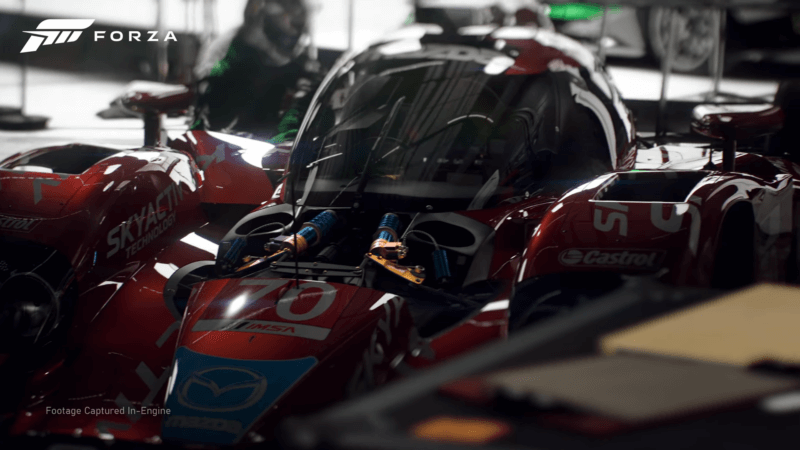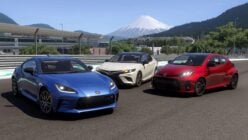
Forza Motorsport creative director Chris Esaki returned to the hot seat on the latest Forza Monthly live stream to discuss more details on the upcoming Forza Motorsport, specifically regarding a new suspension model for the title.
The last time we heard from Esaki was this past September when he revealed details on the deeper, more authentic multiplayer experience coming to the racing sim. Turn 10 wants the core experience of the revamped multiplayer to focus on players improving alongside each other.
The previous playtest brought this to light by way of open practice, qualifying, and the feature race. Particularly, open practice is the most beneficial with the addition of the corner mastery system, helping players to understand where they need to improve on a corner-by-corner basis.
With 2021 coming to a close, Esaki gives players a new update on the game, this time focusing on the suspension model — having previously covered the tire model.
Esaki admits that, though a keen amateur when it comes to working on cars, he only has a surface level understanding of the forces at play in vehicle suspension. Therefore over the past year or so he’s gone on a “knowledge journey”, to learn more in order to be able to better communicate with the team’s specialists.
He mentions four aspects of car suspension that he’s learned more about in his research: roll center, anti-dive, anti-squat, and dynamic force propagation.
Dynamic force propagation is exactly as it sounds: how forces travel from the contact patch of the tire, through the suspension linkages, and the frame of the car (and back again). Esaki comments that this is now “super realistic” in Forza Motorsport, which has the side-benefit of more faithful recreation of the CAD modeling T10 receives from its automotive partners.
While not specifically covered in Esaki’s update, dive and squat are the same thing but at opposite ends of the car. Dive is the tendency of the front of the car to dip under deceleration (usually heavy braking) and squat is the tendency of the rear of the car to dip under acceleration — as the load transfers to the front or rear. Anti-dive and anti-squat therefore refer to suspension designs aimed to resist both.
Roll center is a complicated concept, but it represents a virtual point through an axle at which you can apply forces to the sprung mass (pretty much anything other than the wheels, wheel hubs, and anything attached to either) without producing suspension roll. It’s something race car engineers tune the suspension to affect, trading off body roll with tire temperature (and wear).
If the new suspension model takes account of all of these factors, it should produce some of the most realistic and natural vehicle handling yet seen on a console title. As Esaki notes though, the end goal is making the cars that much easier to drive for all players, regardless of skill level.
Finally, Esaki closes out by saying the team made a lot of strides with the game over the duration of 2021, a lot of which is due to player feedback. While this year has largely focused on “low-level physics details”, he and the team are looking forward to sharing more on the larger game being built in 2022.
Of course we don’t yet have any news on a release window. With the game still in its development stages, it may not be until late 2022 that the game launches and that’s at the earliest. This will give Forza Motorsport the longest development period in the franchise’s 16-year history.
Stay tuned for more details in the new year!










